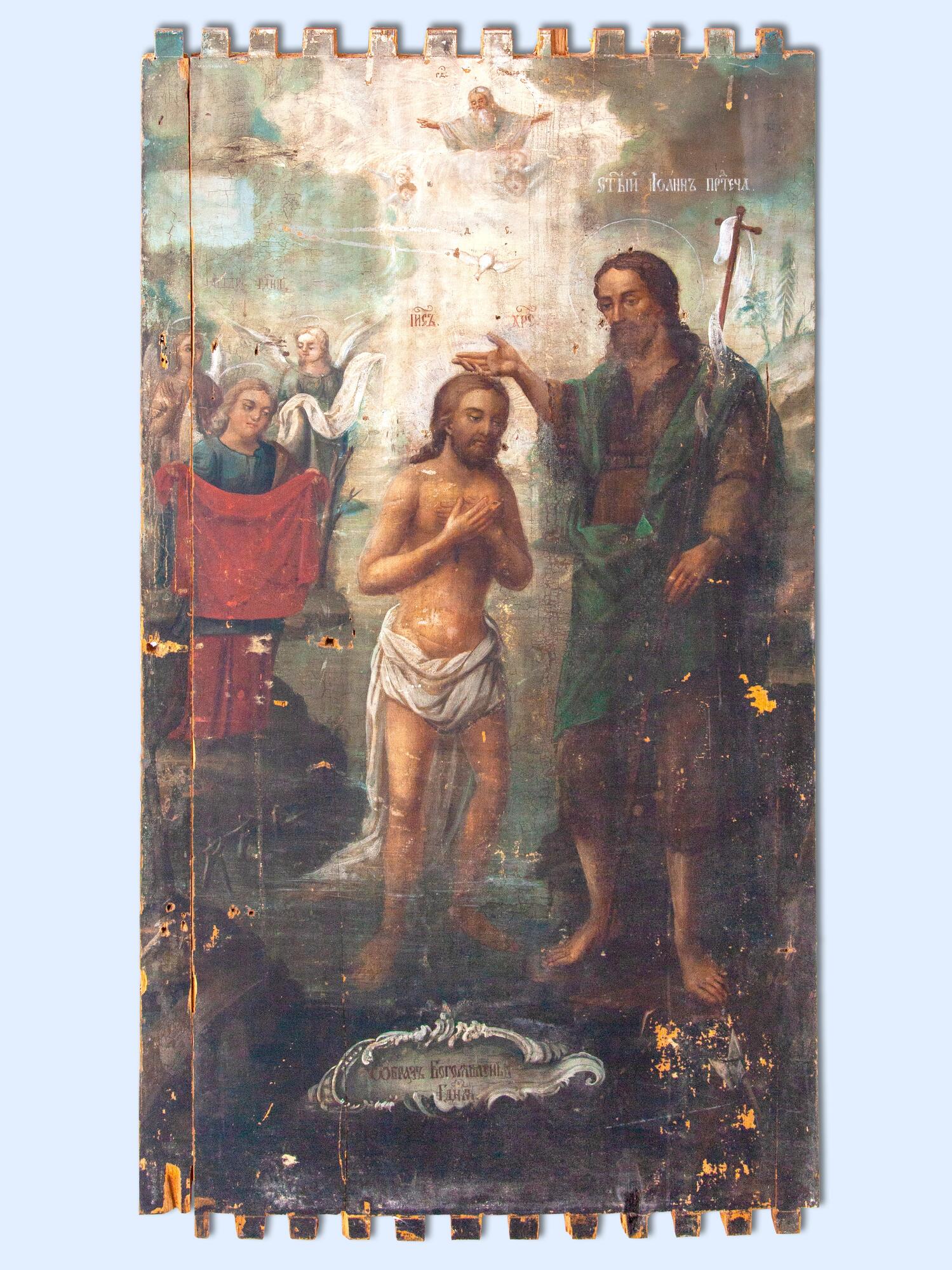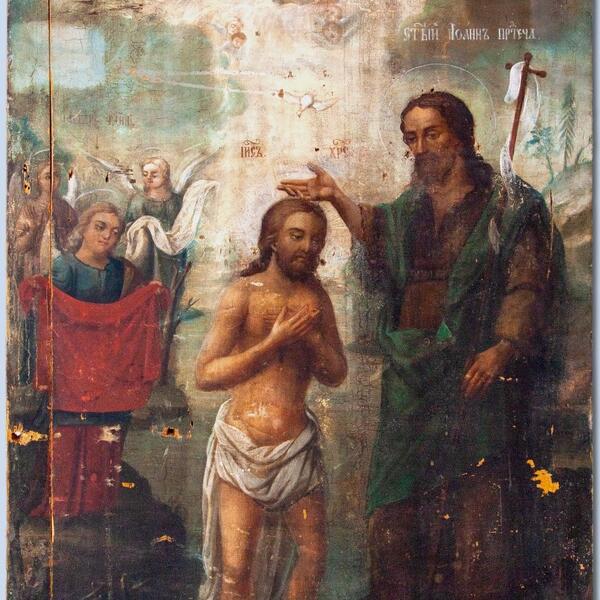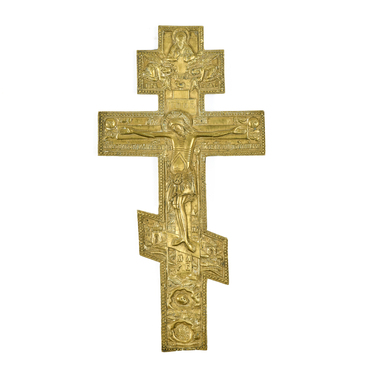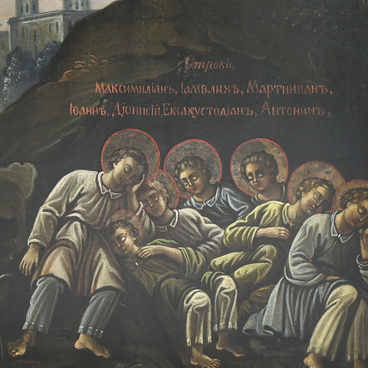The icon from the collection of the Bishop’s House depicts the baptism of Jesus Christ in the Jordan River. The Gospel says that the Savior was baptized at the age of 30. The rite was performed by the prophet John, who was called the Baptist or Forerunner — that is, the one who precedes Christ, announcing his appearance.
In the middle part of the icon, the artist painted Jesus standing in the waters of the Jordan. He wears only a white loincloth. Christ’s head is surrounded by a halo, his arms are crossed on his chest, his gaze is humbly lowered. To his right is the figure of John the Baptist. The Prophet is depicted barefoot; he wears a brown chiton and a green himation. In his left hand, John holds a staff with the top in the form of a cross, covered with white ribbon. With his right hand, he touches the head of Jesus. The prophet’s halo is marked by a thin white line and is barely discernible.
To Christ’s left, the icon painter depicted three angels. One of them holds an unfolded red blanket, and the other holds a broad white piece of linen fabric. The third angel has his hands folded in a gesture of prayer and his eyes are turned toward heaven, where the artist depicted God the Father and the six-winged seraphim.
There is a scroll with shaped edges at the bottom. The inscription ‘The Image of the Epiphany of the Lord’ is on it. The sides of the icon have sockets for fastenings in the iconostasis.
The Epiphany icon is an obligatory attribute of any Orthodox church. Depending on the time and place of creation, different variations could be found: in the waters of the Jordan, fish or human figures were depicted around Christ, a cherub was placed at the bottom of the image, the poses of angels and their number varied.
The Epiphany Day is celebrated in the Russian Orthodox Church on January 19. On this day, it is customary to consecrate water in the temple and then store it for a year: it was believed that it could cure diseases and protect against the evil eye. Folk tales mention that such water was a reliable remedy against evil spirits. Besides, since ancient times and to this day, there is a tradition of bathing in an ice-hole on this day: it is believed that this procedure cures the person of sins and diseases.
In the middle part of the icon, the artist painted Jesus standing in the waters of the Jordan. He wears only a white loincloth. Christ’s head is surrounded by a halo, his arms are crossed on his chest, his gaze is humbly lowered. To his right is the figure of John the Baptist. The Prophet is depicted barefoot; he wears a brown chiton and a green himation. In his left hand, John holds a staff with the top in the form of a cross, covered with white ribbon. With his right hand, he touches the head of Jesus. The prophet’s halo is marked by a thin white line and is barely discernible.
To Christ’s left, the icon painter depicted three angels. One of them holds an unfolded red blanket, and the other holds a broad white piece of linen fabric. The third angel has his hands folded in a gesture of prayer and his eyes are turned toward heaven, where the artist depicted God the Father and the six-winged seraphim.
There is a scroll with shaped edges at the bottom. The inscription ‘The Image of the Epiphany of the Lord’ is on it. The sides of the icon have sockets for fastenings in the iconostasis.
The Epiphany icon is an obligatory attribute of any Orthodox church. Depending on the time and place of creation, different variations could be found: in the waters of the Jordan, fish or human figures were depicted around Christ, a cherub was placed at the bottom of the image, the poses of angels and their number varied.
The Epiphany Day is celebrated in the Russian Orthodox Church on January 19. On this day, it is customary to consecrate water in the temple and then store it for a year: it was believed that it could cure diseases and protect against the evil eye. Folk tales mention that such water was a reliable remedy against evil spirits. Besides, since ancient times and to this day, there is a tradition of bathing in an ice-hole on this day: it is believed that this procedure cures the person of sins and diseases.



